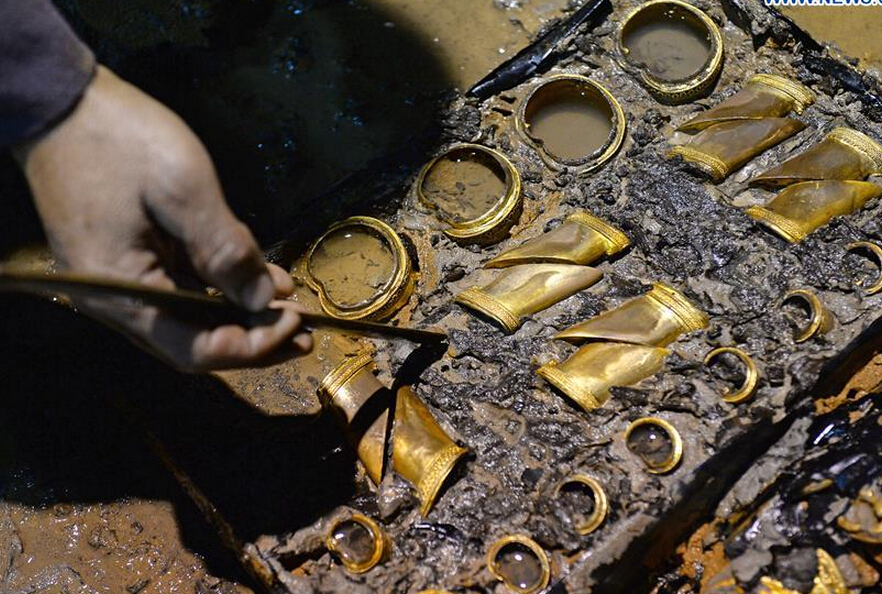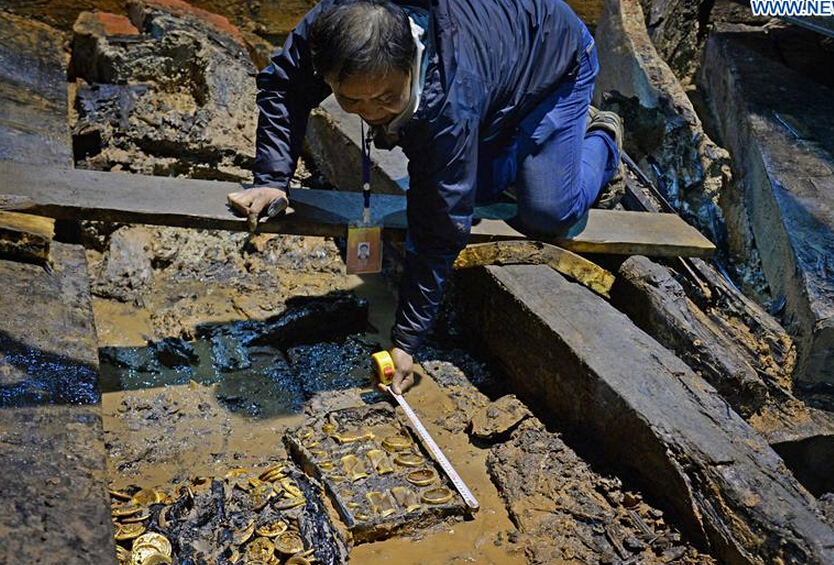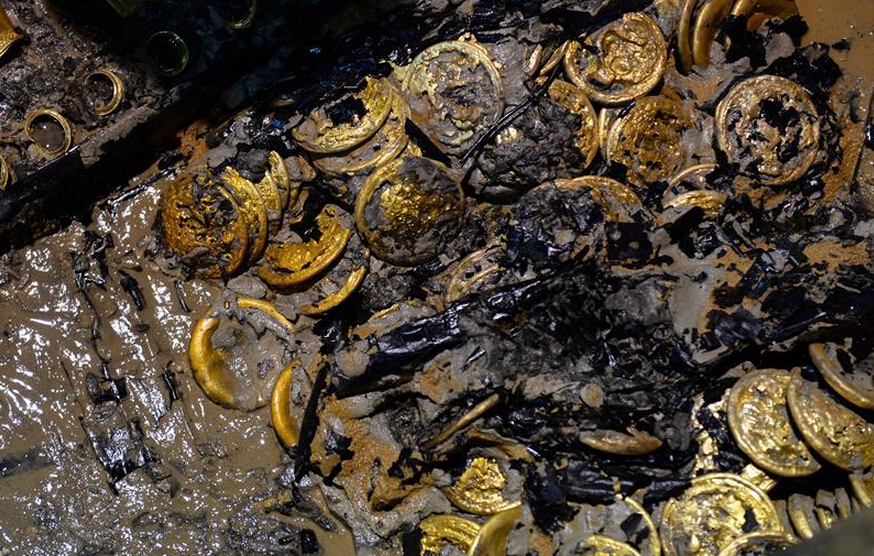Gold coins, hoofs found in 2,000-yr-old Chinese tomb
From:Xinhua Net NetWriter:Wan XiangDate:2015-11-20
Chinese archaeologists on Tuesday discovered 75 gold coins and hoof-shaped ingots in an aristocrat's tomb that dates back to the Western Han Dynasty (206 BC - 24 AD).The gold objects -- 25 gold hoofs and 50 very large gold coins -- are the largest single batch of gold items ever found in a Han Dynasty tomb. They were unearthed from the tomb of the first "Haihunhou" (Marquis of Haihun) in east China's Jiangxi Province.

An archaeologist cleans the hoof-shaped ingots in an aristocrat's tomb that dates back to the Western Han Dynasty (206 BC - 24 AD), in Nanchang, capital of east China's Jiangxi Province, Nov. 17, 2015.
The coins weigh about 250 grams each, while the hoofs' weights vary from 40 to 250 grams, said Yang Jun, who leads the excavation team.
They were packed in three boxes placed under a bed in the main chamber of the tomb. According to Yang, the gold objects appear to have been awarded to the marquis by the emperor.

An archaeologist measures the gold items in an aristocrat's tomb that dates back to the Western Han Dynasty (206 BC - 24 AD), in Nanchang, capital of east China's Jiangxi Province, Nov. 17, 2015.
Researchers are still working through the main chamber of the tomb in the Haihunhou cemetery, the most complete known Western Han Dynasty cemetery. It covers roughly 40,000 square meters and contains eight tombs and a burial site for horses used to pull chariots.
The tomb is thought to belong to Liu He, grandson of Emperor Wu. Liu was given the title "Haihunhou" after he was deposed as emperor after only 27 days. Haihun is the ancient name of a very small kingdom in the north of Jiangxi.

Gold coins discovered in an aristocrat's tomb that dates back to the Western Han Dynasty (206 BC - 24 AD) are seen in Nanchang, capital of east China's Jiangxi Province, Nov. 17, 2015.
The site's excavation started in 2011. Artifacts unearthed so far include a portrait of Confucius, nearly 3,000 wooden tablets and bamboo slips and a large number of bronze, gold and jade items.

